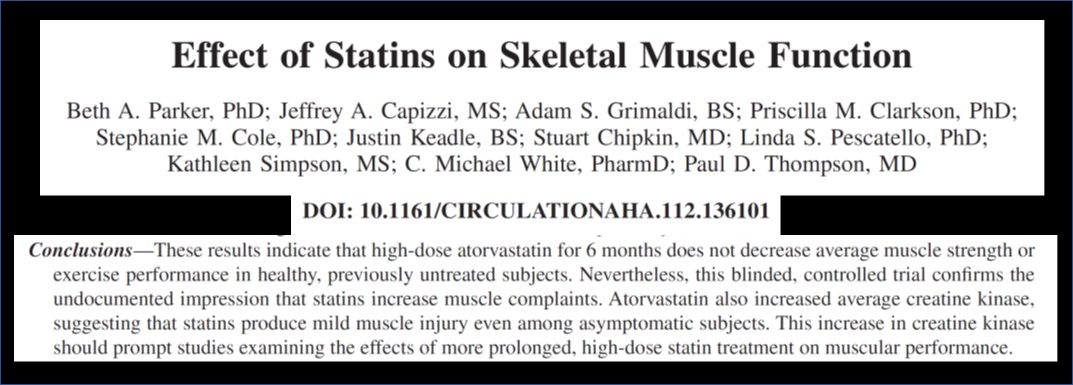Please RT to Dayspring & Peter Attia (Both block me)
Increased Brain Amyloid with Statins
dx.doi.org/10.1016/j.dadm…
@FatEmperor @ProfTimNoakes @FructoseNo @DrAseemMalhotra @KenDBerryMD @TuitNutrition

Dose/Time Dependent Development of T2D
@lowcarbGP @DaveKeto @DavidPerlmutter

Women are more susceptible to develop statin-induced T2D than Men
e100 DIABETES CARE, VOLUME 36, JULY 2013

TD isn't aware of muscle wasting with statins, so this week is devoted to muscle adverse effects - Please educate him
Creatine phosphokinase levels used to determine statin-induced muscle damage, but this paper shows damage occurs w/o ⬆️CP



Day 8 Statins = T2D hazard zone
@lowcarbGP
Diabetes Metab Res Rev. 2019;35":e3189.
doi.org/10.1002/dmrr.3…

"unfavorable statin effects on energy
& exertional fatigue. Effects were seen in a generally
healthy sample given modest statin doses"
doi:10.1001 /archinternmed.2012.2171

"Patients who started statin therapy ...
experienced a greater decrease in insulin sensitivity &
metabolic control deterioration compared with statin-free group"
Black line = statin, grey = no statin y axis = HR

Dr Golomb, UC San Diego
"ALS first emerged, or accelerated, with statin
dose increase or rechallenge. ... subjects noted
... abatement of symptoms ... with statin discontinuation"
doi.org/10.2165/000020…

Heart failure epidemic with ⬆️statin use.
⬆️HF survival w/ statin withdrawal
"Statin-associated cardiomyopathy responds to statin withdrawal and administration of coenzyme q10"
doi.org/10.7812/TPP/18…
@Alabdulgaderaa @DietHeartNews @holmanm
High Rate of ALS Reported to the FDA by Statin Users
Drug Safety (2018) 41:403–413
doi.org/10.1007/s40264…

"Conclusions: Use of high potency statins is associated with an increased rate of diagnosis for acute kidney injury in hospital admissions compared with low potency statins."
BMJ 2013;346:f880 doi: 10.1136/bmj.f880

"Statins are associated with increased risk of SSTIs (skin and soft tissue infections) ... We believe that clinicians should be aware of the association between statins and SSTIs"
DOI: 10.1111/bcp.14077







